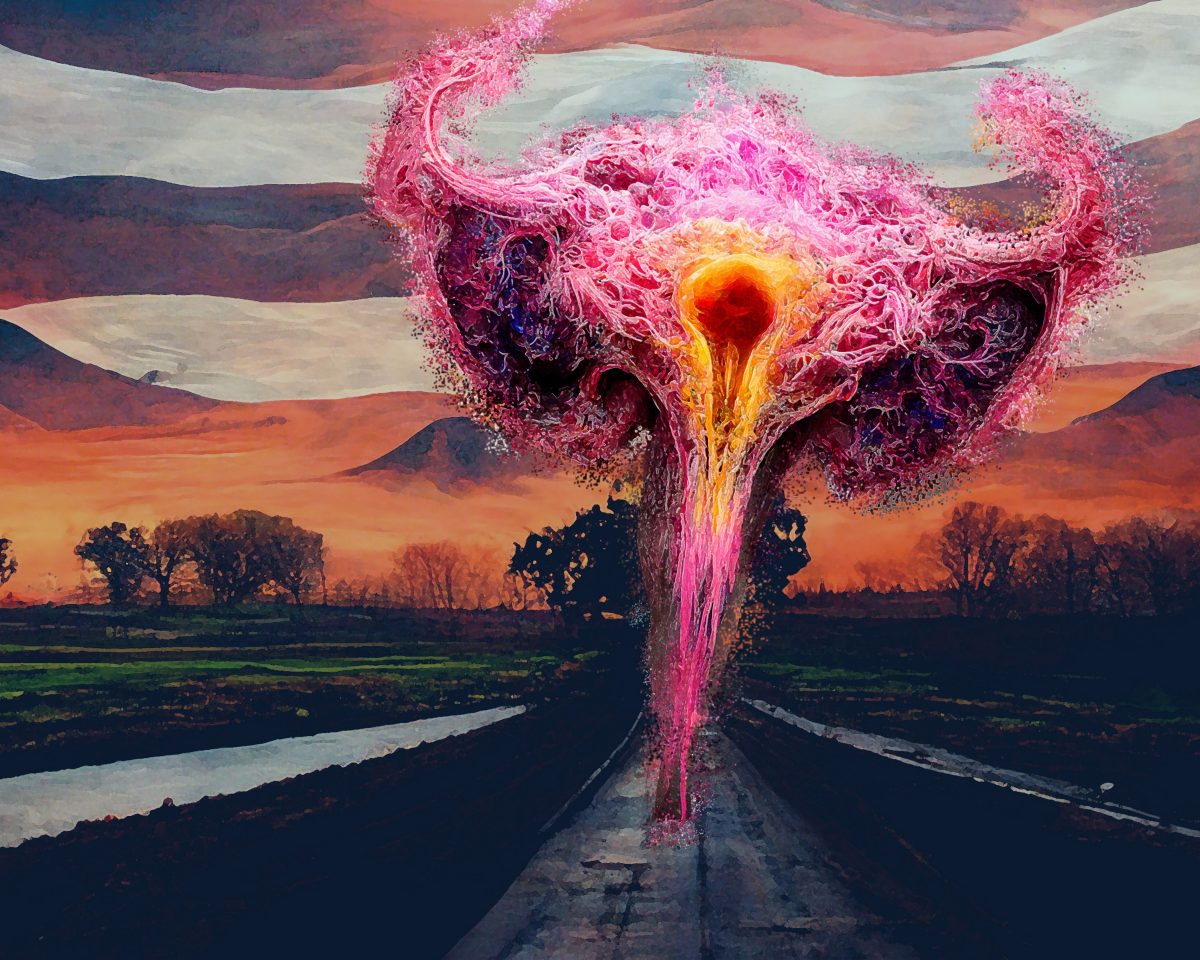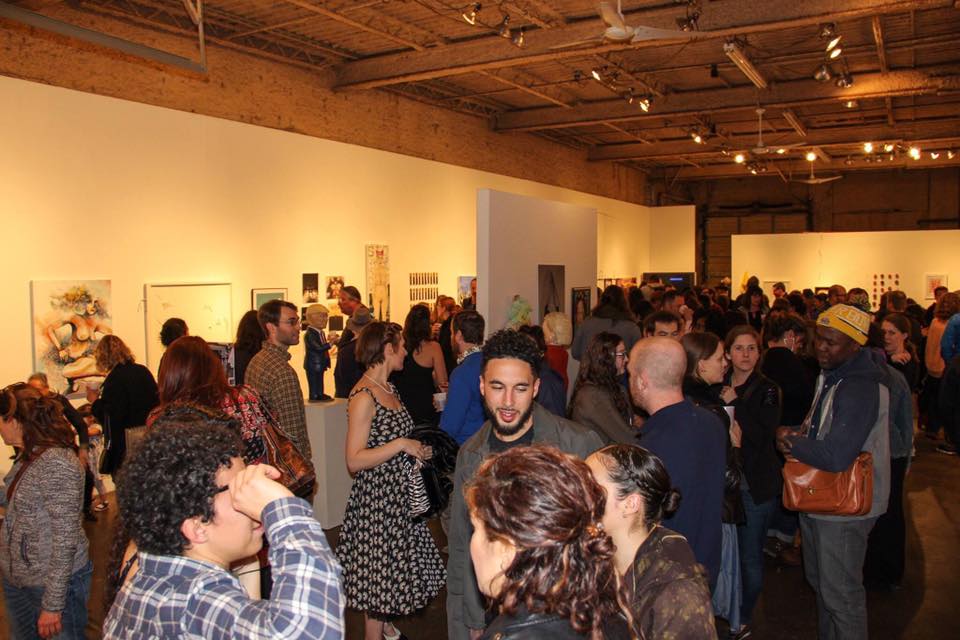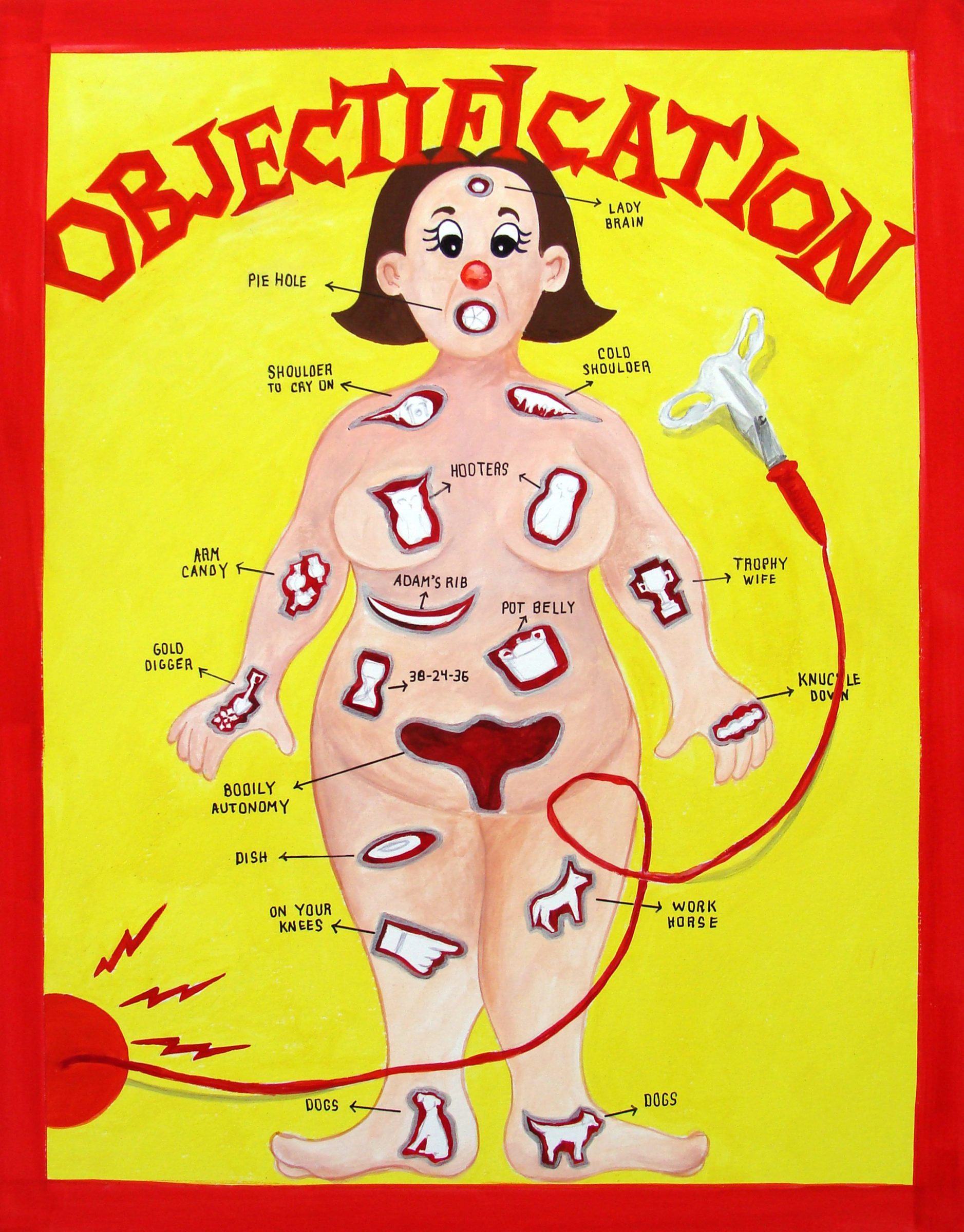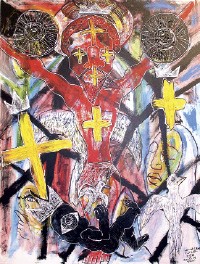Before Covid postponed events or canceled them altogether, Marshall Arts hosted an open studio event each December, welcoming the public into makers’ creative spaces and boosting the artistic community’s spirits. But the gallery hasn’t hosted one since 2019 — a fact that wasn’t lost on Lauren Holtermann, aka Holtermonster, who started renting studio space from Marshall Arts post-pandemic.
In fact, Holtermann didn’t even know about the previous open studio events until gallery manager Anthony D. Lee mentioned it one day. “I was like, ‘Let’s do that again,’” she says. “And then it turned into a whole thing.”
By “whole thing,” she means the first-ever Edge District Art Crawl. With Holtermann’s excitement to motivate him, Lee wanted to make the usual open studio event bigger. “Now, it’s not just us, Marshall Arts,” he says. “We extended the invite to all the new guys [Sheet Cake, Ugly Art Co., and Solid Ground Studio]. So it takes it from us, an isolated venue, and now we kind of have a district. I always kind of knew that was coming because I’ve been here for 20 years, and Marshall Arts has been for 32 years.”
The “new guys,” as Lee calls them, have all opened their spots in the past year or so. Sheet Cake, owned by Lauren Kennedy, celebrated its first year with a party on December 14th, and Anderson Goin’s Ugly Art Co. opened this spring. Solid Ground Studio is artists Jodi Brewer, Pam McDonnell, Lisa Williamson, and Paul Behnke’s private studio that’ll be open to the public for the art crawl. These four artists just closed their show, “Something Solid,” on December 14th at Marshall Arts, the gallery’s first show since Covid.
For the art crawl, guests can expect special gallery hours as they take a self-guided tour of the four arts venues. Marshall Arts will have work on display by its artists, plus open studios by Lee, Holtermann, Emma Self, Wiley Bros Music, and others. Sheet Cake’s new exhibitions “Loose Ends” and “Back for Seconds” will be on display with work by Brittney Boyd Bullock, Roger Allan Cleaves, Melissa Dunn, Stephanie Howard, and Clare Torina. Meanwhile, Ugly Art Co. will have an exhibition by Sam Reeves Hill.
“We want to let people know that the Edge is an active third space,” Lee says of his hopes for the art crawl. “The district’s still in its formation, but it’s a walkable locale with interesting things to do.”
“And it’s cool to show off that we have a blooming arts district popping up with some old heads, like Marshall Arts, and all these new bloods,” adds Holtermann. “It’s really exciting.”
Edge District Art Crawl, Marshall Arts, 639 Marshall | Sheet Cake, 405 Monroe | Ugly Art Co., 635 Madison | Solid Ground Studio, 669 Monroe, Thursday, December 19, 5-8 p.m., free.





